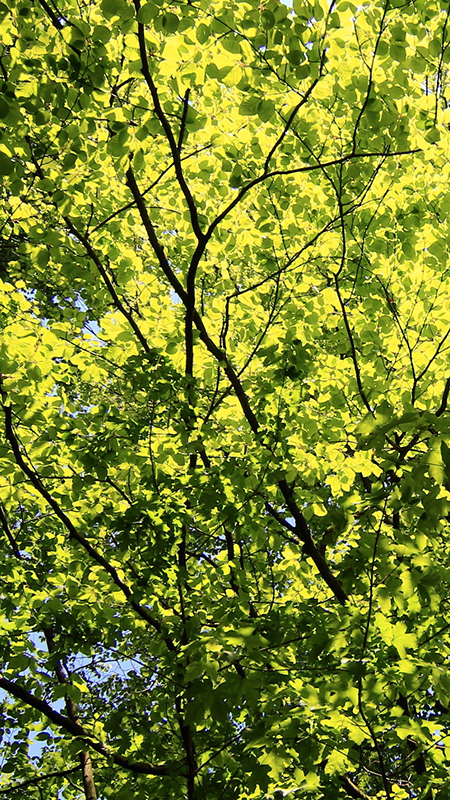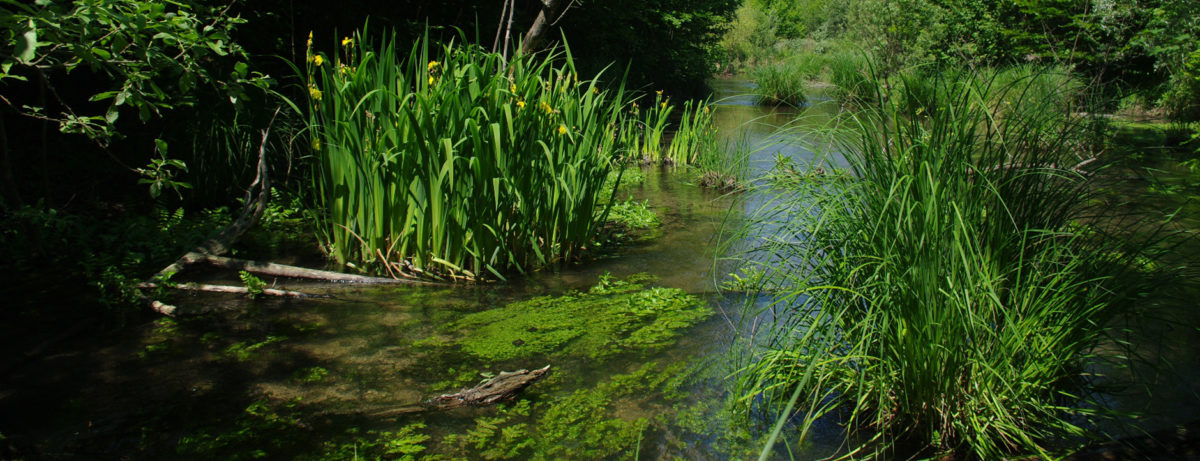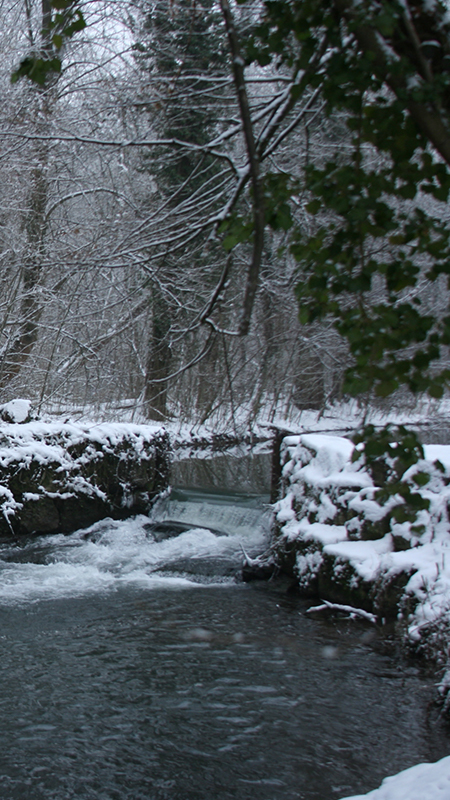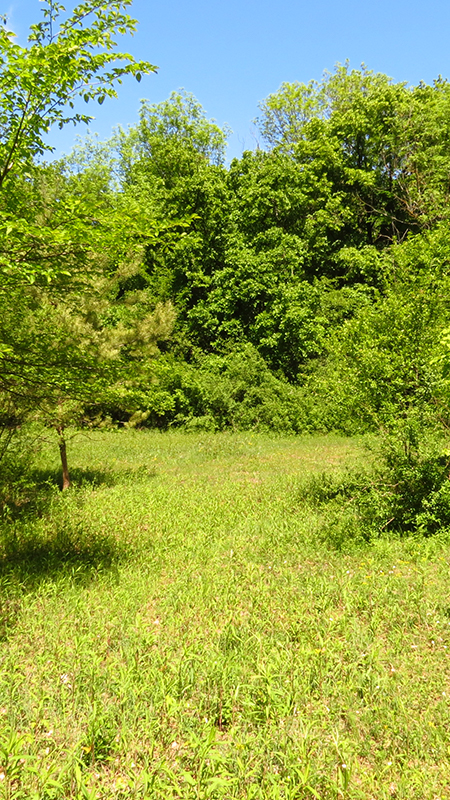

The aquatic habitats of Neuhof-Illkirch nature reserve
The Rhin Tortu ran through it…
While the Rhine has lost much of its influence since it was canalized, aquatic environments are still very much present in Neuhof-Illkirch Forest.
Four watercourses flow beneath the forest cover: the Rhin Tortu and its two distributaries—the Schwarzwasser and the Brunnenwasser, and the Altenheimerkopf. Injected by water intake infrastructures along the Rhine and the water table, these watercourses usually have a slow and relatively constant flow.
In addition to lotic (flowing water) habitats, the forest is the site of around 30 forest ponds and small lakes.
These aquatic environments are composed of 13 natural habitats:
- Six relate to flowing water, such as Eutrophic vegetation of slow-flowing rivers and Euro-Siberian annual river mud communities;
- Five form stagnant water habitats (ponds, ox-bows, lakes, etc.), for example, Chara biotopes and Euro-Siberian annual river mud communities;
- Two have developed at the borders of the two previous types or in wet depressions. These are lesser pond sedges and Phragmites australis beds.
These aquatic habitats make an important contribution to the diversification of the plant and animal species in this reserve dominated by forest.
Some of these habitats are habitats of European interest which justify the Reserve’s inclusion in the Natura 2000 network.
These habitats are according to the Natura 2000 nomenclature:
- Hard oligo-mesotrophic waters with benthic vegetation of Chara app.
- 3150 Natural eutrophic lakes with Magnopotamion or Hydrocharition – type vegetation;
- 3260 Water courses of plain to montane levels with Ranunculion fluitantis and Callitricho-Batrachion vegetation;
- 3270 Rivers with muddy banks with Chenopodion rubri p.p. and Bidention p.p. vegetation
20 km (approx.) of streams and rivers flow through Neuhof-Illkirch Nature Reserve.

Rich and diverse environments


